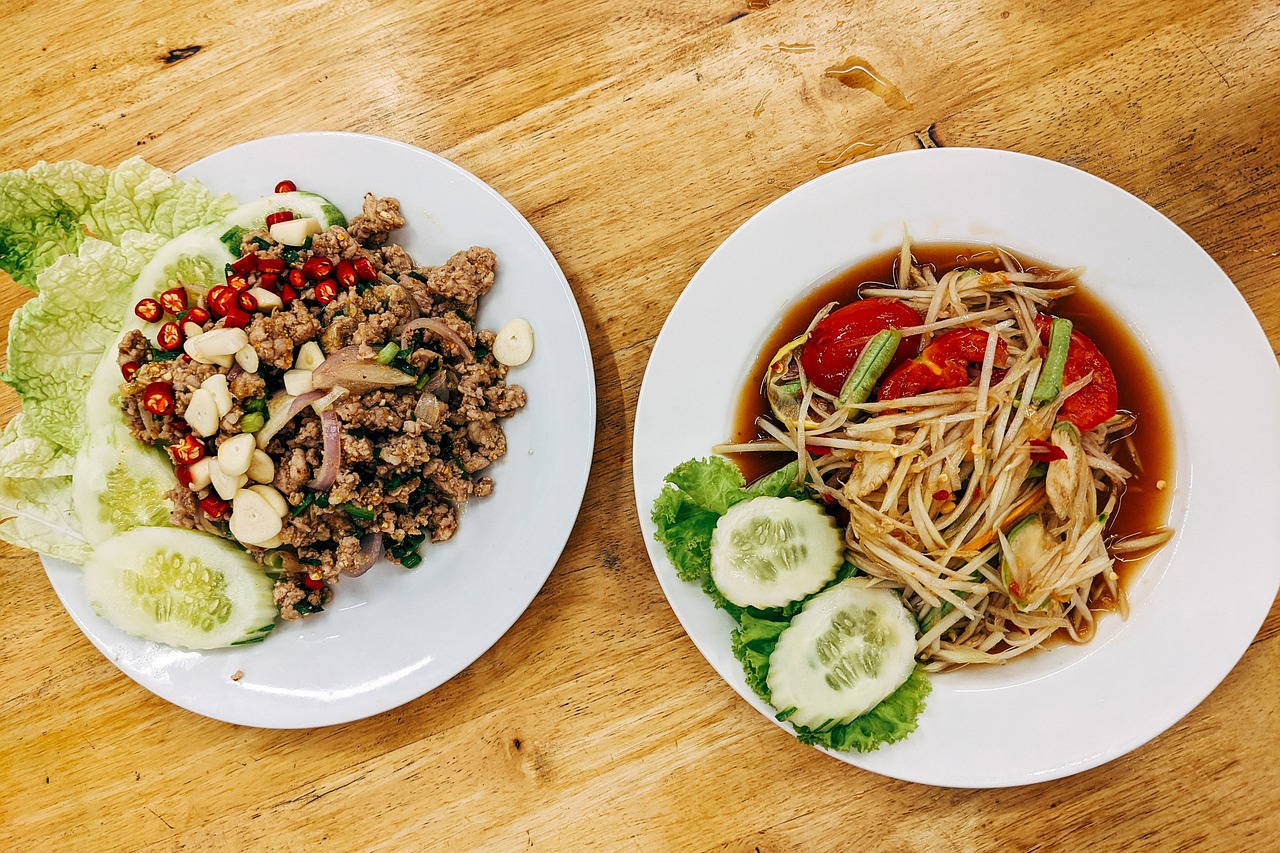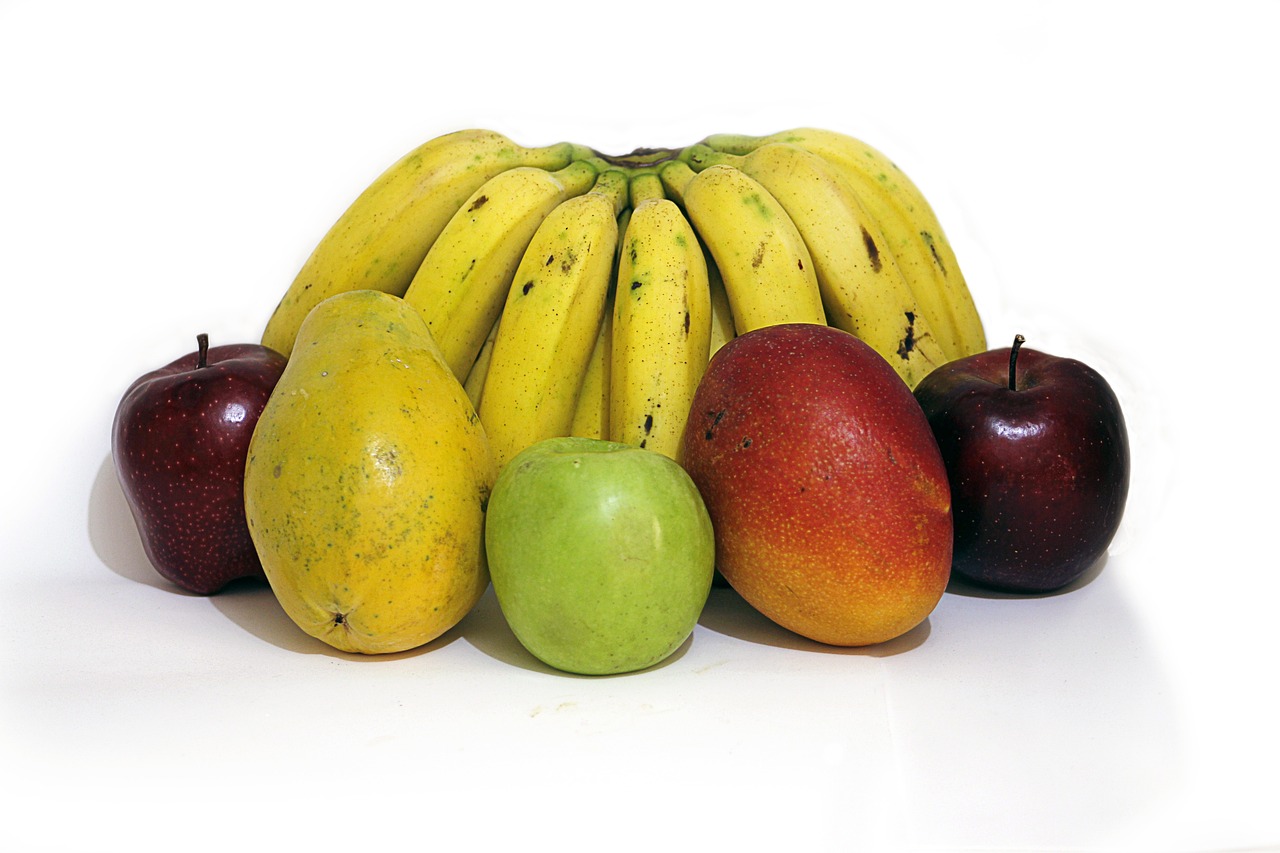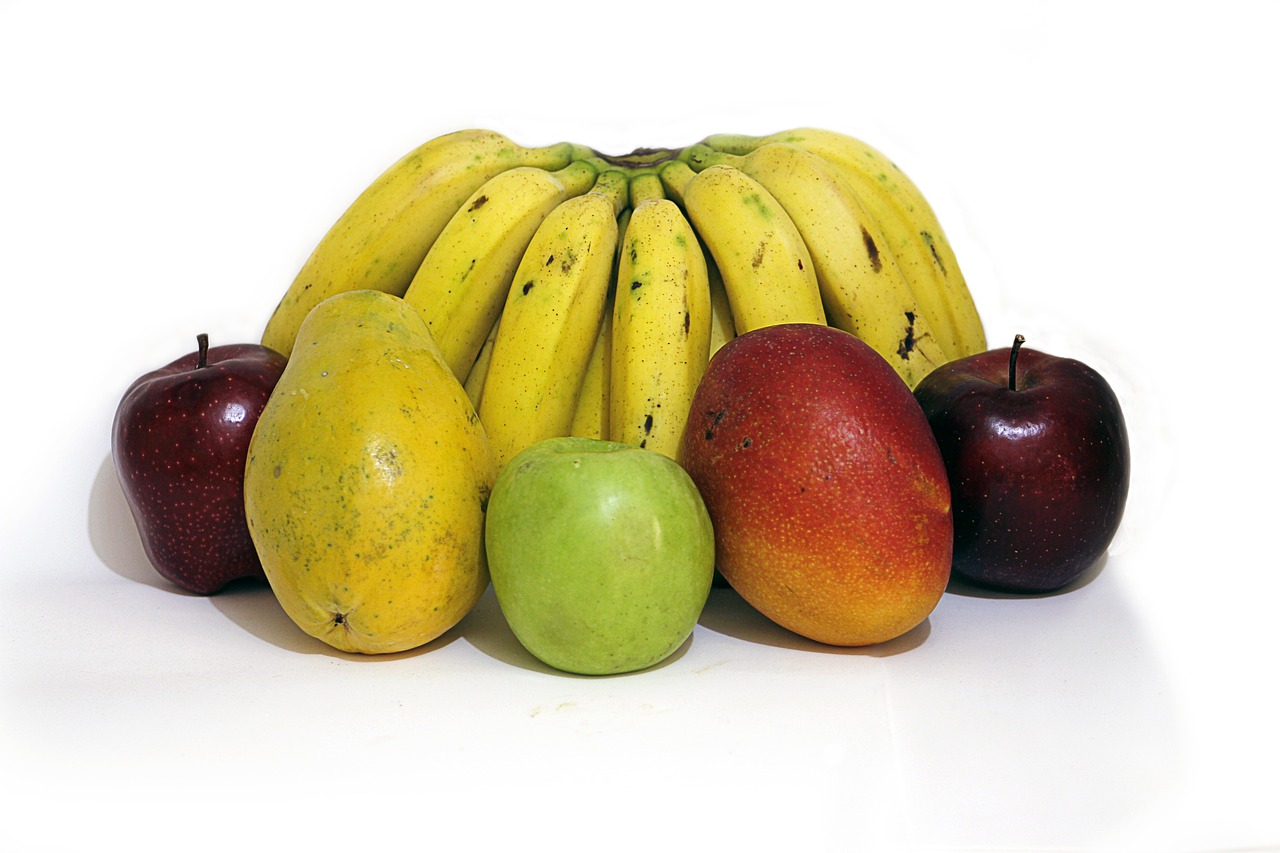Som Tum (Green Papaya Salad): Refreshing and Tangy

Exploring the vibrant and flavorful world of Som Tum, a traditional Thai dish known for its refreshing and tangy taste. Som Tum, also known as Green Papaya Salad, is a delightful combination of contrasting flavors and textures that explode in your mouth with each bite. The salad offers a refreshing crunch from the green papaya, a kick of heat from the chili peppers, a burst of umami from the fish sauce, a zing of acidity from the lime juice, and a satisfying crunch from the peanuts. It's a symphony of flavors that surprises and delights the taste buds.
Ingredients Used in Som Tum
When it comes to crafting the delectable Som Tum salad, a harmonious blend of key ingredients is essential to achieve its signature taste. The star of this dish is the green papaya, providing a crunchy texture and subtle sweetness that forms the salad's base. Complementing the papaya are fiery chili peppers, adding a spicy kick that tantalizes the taste buds.
Enhancing the flavor profile further is the pungent garlic, which infuses the salad with its aromatic essence. To achieve the perfect balance of savory and umami notes, fish sauce is added, lending a depth of flavor that is quintessential to Thai cuisine.
For a burst of acidity and tanginess, lime juice is squeezed into the mix, brightening up the salad and tying all the flavors together. Lastly, a sprinkling of peanuts adds a delightful crunch and nutty undertones, elevating the overall texture of the dish.
Each of these ingredients plays a crucial role in creating the complex and harmonious flavor profile that defines Som Tum, making it a beloved dish cherished for its refreshing and tangy taste.
Preparation Methods
When it comes to preparing Som Tum, the traditional Thai Green Papaya Salad, the process involves a series of meticulous steps that are crucial in achieving the perfect balance of flavors and textures. Let's dive into the intricate preparation methods that make this dish so special:
1. Shredding the Green Papaya: The first step in making Som Tum is shredding the green papaya into thin strips. This process requires skill and precision to ensure the papaya is cut to the right thickness, allowing it to absorb the flavors of the dressing effectively.
2. Pounding the Ingredients: Once the green papaya is prepared, the next step is pounding the ingredients in a mortar and pestle. This traditional method helps release the flavors of the garlic, chili peppers, and other seasonings, creating a harmonious blend of spicy, tangy, and savory notes.
3. Balancing Flavors: Achieving the perfect balance of flavors is key in Som Tum preparation. The combination of fish sauce for saltiness, lime juice for acidity, and sugar for sweetness must be carefully adjusted to create a well-rounded taste profile that tantalizes the taste buds.
4. Adding Texture: In addition to balancing flavors, Som Tum also focuses on texture. The crunchy texture of the shredded green papaya, combined with the creaminess of crushed peanuts, creates a delightful contrast that enhances the overall dining experience.
5. Final Touches: To complete the preparation process, the salad is garnished with additional toppings such as cherry tomatoes, long beans, and sometimes even dried shrimp for extra umami flavor. These final touches add visual appeal and complexity to the dish.
Overall, the preparation methods of Som Tum highlight the meticulous attention to detail and the artistry involved in creating this beloved Thai salad. From the careful shredding of papaya to the pounding of ingredients in a mortar and pestle, each step contributes to the unique and refreshing taste that defines Som Tum.
Cultural Significance
When it comes to the cultural significance of Som Tum in Thai cuisine, it's not just a dish but a symbol of the vibrant and diverse culinary heritage of Thailand. This iconic salad represents the perfect balance of flavors and textures that Thai cuisine is known for - sweet, sour, salty, spicy, and crunchy all in one bite. Som Tum holds a special place in the hearts of the Thai people, reflecting their love for fresh ingredients and bold flavors.
In Thai society, Som Tum is more than just a food item; it's a social experience that brings people together. Whether enjoyed at bustling street food stalls, upscale restaurants, or intimate family gatherings, this salad is a unifying element that transcends social boundaries. The act of sharing a plate of Som Tum fosters connections and creates memorable moments that linger long after the meal is over.
The preparation and consumption of Som Tum also carry deep cultural meanings. The rhythmic pounding of ingredients in a mortar and pestle is not just a cooking technique but a ritual that connects the present with the past. It's a way of honoring traditional methods and preserving culinary heritage in a rapidly changing world.
Furthermore, Som Tum embodies the essence of Thai hospitality and generosity. Serving this salad to guests is a gesture of warmth and welcome, a way of showing appreciation and respect. The act of offering Som Tum is akin to extending an olive branch, a symbol of friendship and goodwill that transcends language barriers.
Regional Variations
When it comes to Som Tum, the regional variations across Thailand offer a delightful array of flavors and ingredients that cater to diverse palates. Let's take a closer look at some of the unique renditions of this beloved salad:
- Northeastern Thailand: In the northeastern region of Thailand, Som Tum is renowned for its fiery and intense flavors. Here, you can expect the salad to pack a punch with extra spicy chili peppers, fermented fish sauce, and a generous amount of garlic. The heat level in this version is not for the faint of heart but is a favorite among spice enthusiasts.
- Central Thailand: Moving towards central Thailand, the Som Tum here offers a more balanced and milder taste compared to the northeastern version. The use of fresh herbs like cilantro and mint adds a refreshing twist to the salad, complementing the tanginess of the lime juice and the crunch of peanuts.
- Southern Thailand: In the southern part of Thailand, Som Tum takes on a sweeter and more citrusy profile. Pineapple or mango may be added to the salad, enhancing the natural sweetness and tropical flavors. The spiciness is toned down in this version, allowing the fruits to shine through.
These regional variations showcase the versatility of Som Tum and highlight the diverse culinary landscape of Thailand. Whether you prefer a fiery kick, a harmonious blend of flavors, or a tropical twist, there is a version of Som Tum to suit every taste bud.



 HazalVardal
HazalVardal 





